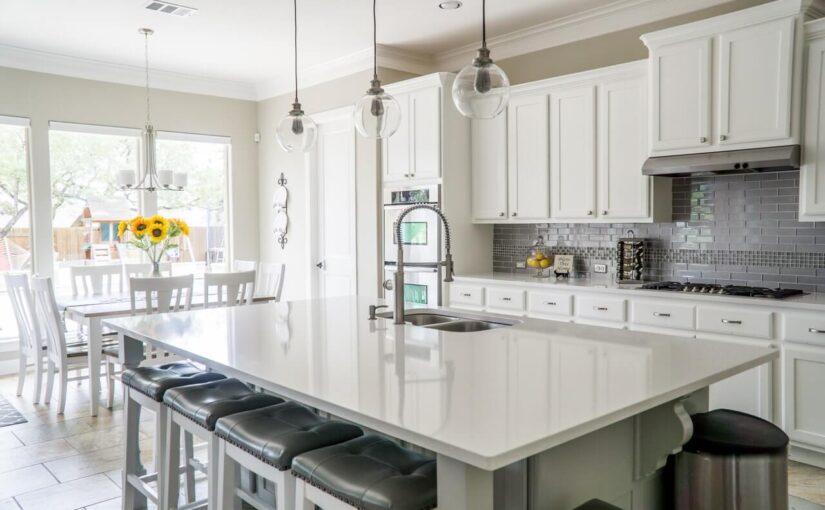
 By Adm_Mls
By Adm_Mls
Top 5 Home Design Trends for a New Decade
Whether you’re planning a simple refresh or a full-scale renovation, it’s important to stay up-to-date on the latest design trends. Sellers who make tasteful updates can generate increased buyer interest, and buyers should factor renovation costs into their overall budget.
Even if you don’t have plans to sell, we advise our clients to be thoughtful about the finishes they select. Out-of-style elements could cause your home to feel dated quickly.
To help, we’ve rounded up five of the hottest home design trends for 2020. Keep in mind, not all of these will work well in every house. If you plan to buy, list, or renovate your property, give us a call. We can help you realize your vision and maximize the impact of your investment.
1. IN: Sustainability / OUT: Fast Furniture
Consumers have become increasingly eco-conscious. Many are shunning the “fast furniture” popularized by retailers like IKEA, opting instead for higher-quality pieces that utilize non-toxic, sustainable materials. At the same time, there’s been a noticeable shift toward individuality in today’s interiors. Instead of following the latest fad, homeowners are investing in items that will “spark joy” (=C3=A0 la Marie Kondo) for years to come.
To incorporate this trend, try refinishing your existing furniture while layering in new pieces made of eco-friendly materials like salvaged wood or rattan. And to accessorize your room, mix sentimental items with newer finds to create a truly personalized space.
2. IN: Cozy / OUT: Cold
Designers are moving away from cool grays, industrial finishes, and stark modernism. In 2020, there’s a big emphasis on creating warm and cozy spaces through color, texture, and shape.
This year, expect to see a move toward warmer neutrals, earth tones, and nature-inspired shades of blue and green. Warm metals, like gold and brass, will also continue to trend. And hardwood floors are heating up, as cool gray and whitewashed finishes make way for classic choices like walnut, mahogany, and oak in richer and darker tones.
3. IN: Bold / OUT: Boring
Bold is back! After years of neutral overload, vivid colors and prints will take center stage in 2020. Expect to see geometric designs, color blocking, and floral patterns on everything from pillows to rugs to wallpaper. Color is coming back to kitchens, too, and two-toned color schemes continue to gain steam.
Of course, clients always want to know how design choices could impact their home’s value. The reality is, neutral finishes are still the safest bet for resale. If you’re prepping your home to go on the market, stick with non-permanent fixtures—like artwork and accessories—to brighten your space.
4. IN: Nature / OUT: Industrial
Biophilic design centers around the health and wellness benefits of connecting with nature, and it’s impacted the latest trends in color, prints, and materials. Floral and botanical patterns are hot right now, along with nature-inspired hues, like blues, greens, and earth tones.
We’re also seeing a heightened use of houseplants and natural materials, like wicker, rattan, and jute. This infusion of nature coincides with a decline in the popularity of urban-industrial fixtures. Designers predict that concrete floors and Edison light bulbs are on the way out.
5. IN: Functional / OUT: Fussy
In 2020, homeowners want design that’s beautiful and liveable. Low-maintenance materials are surging in popularity. Engineered quartz—which is more durable than natural stone—is now the #1 choice for countertops. Waterproof, wood-look luxury vinylis the fastest-growing segment in flooring. And improvements to water and stain-resistant performance fabric has made it a mainstream option for upholstery.
Now that functional is hot, what’s not? Designers say mirrored furniture, open shelving, and all-white kitchens are too impractical for today’s busy families.
DESIGNED TO SELL
Want to find out how upgrades could impact the value of your home? Preferences vary by neighborhood and price range. We can share our insights and offer tips on how to maximize the return on your investment. Contact us to schedule a free consultation!
 Facebook
Facebook
 Instagram
Instagram
 Twtitter
Twtitter
 WhatsApp
WhatsApp









